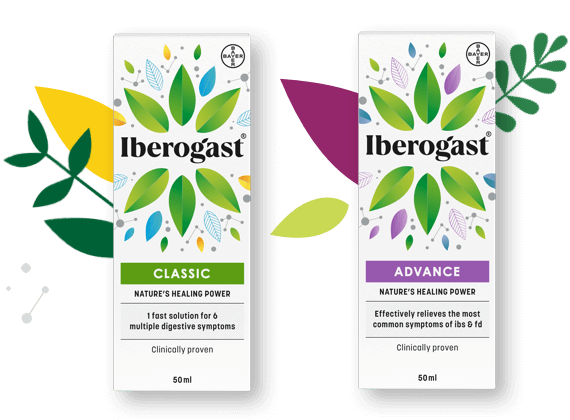Liquorice root (Liquiritiae radix) – a sweet that is good for the stomach
Liquorice (Glycyrrhiza glabra) owes its name to the sweet taste of its roots - from Greek, glykys= sweet and, rhiza= root. Nowadays, the most famous product from liquorice root, the liquorice candy, is known as a delicious treat.
The long-lived, over 1 m high perennial is anchored in the ground with a long, thick root system and is covered with many small, pale lilac-coloured butterfly blossoms. The liquorice fruits are 1.5 to 2.5 cm long pods with kidney-shaped seeds.
The root contains not only sweet but also healing ingredients that have been used for millennia in connection with gastrointestinal complaints. The earliest evidence comes from ancient Egypt, where it was thought that pharaohs could prepare a sweet drink called mai sus in the afterlife. The Greeks and Romans knew liquorice as a cold remedy.
Read further to learn how liquorice root works and what to look out for when taking it.
Liquorice root has been used for millennia in connection with gastrointestinal complaints. The earliest evidence comes from ancient Egypt, where it was thought that pharaohs could prepare a sweet drink in the afterlife. The Greeks and Romans knew liquorice as a cold remedy.
The Greek name “glycyrrhiza”, of which the name licorice is derived, means “sweet root.”
Liquorice is native to the Mediterranean and West Asia and China, where it is still grown today.
Liquorice root not only regulates acid secretion but at the same time increases mucosal protection of the stomach and in addition also has an anti-inflammatory effect. These properties can be optimally unfolded in Iberogast®.
Liquorice contributes optimally to supportive treatment of gastritis or irritated stomach as well as treatment of functional digestive disorders, like irritable stomach, with symptoms ranging from a feeling of fullness, to stomach pain.
Because of its sweetness liquorice can also be found in many tea blends.
Licorice root is largely collected from controlled wild areas for producing herbal medicinal products. It is mostly found in the Middle and Far East such as China or Uzbekistan. In these countries, licorice is commonly found in very sandy soils, often in desert regions. Licorice root is dug out of the ground in designated collection areas. Part of the root remains in the ground and then regrows the following year. This ensures that the collection areas are harvested in a sustainable manner. Collection is regulated by the GACP guidelines which ensure a sustainable approach to resources and the growth of new plants.
Since licorice plants grow naturally in their native environment, no pesticides are used.
Harvesting takes place in spring or autumn. The harvested roots are cleaned with water, then hulled and cut. They are then dried using various, gentle drying methods to preserve the quality of the root and ensure a minimum glycyrrhizic acid content of 4% in the root.
Interesting facts about liquorice root
Did you know, that:
-
liquorice is native to the Mediterranean and West Asia, where it is still grown today?
-
the inside of the root is yellow and it blooms blue-purple in early summer?
-
the liquorice root contains glycyrrhizin, which is 50-100 times sweeter than refined sugar (sucrose)?
-
there were liquorice stores found in the tomb of King Tut?

The healing power of liquorice
Liquorice root not only regulates acid secretion but at the same time increases mucosal protection of the stomach and in addition also has an anti-inflammatory effect. These properties can be optimally unfolded in Iberogast®.
Thus the liquorice contributes optimally to the treatment of the following:
- Supporting treatment in stomach lining inflammation (gastritis) and irritated stomach
- Functional digestive disorders, like irritable stomach, with symptoms ranging from a feeling of fullness, to stomach pain.
Because of its sweetness liquorice can also be found in many tea blends.
At a glance: The effect of liquorice root in Iberogast®
The following table shows the different active benefits of liquorice root in Iberogast®:
| Active benefits of Liquorice root in the frame of irritable stomach | |
| Activation of the musculature in the lower stomach | |
| Relaxation of the musculature in the upper stomach | |
| Anti-inflammatory | |
| Regulation of acid production | |
| Protection of the mucosa |
Legend:
| High impact | |
| Medium impact | |
| Light impact |
The below video is an example only. Please localize the videos in the content packages (can be found on eDAM) and here with your local market Vimeo/YouTube links
This is a sample video only. Please replace with your own local country Vimeo/YouTube videos.
Buy Iberogast® prescription-free from your pharmacy.
Get the power of nature into your home!

Abdel-Aziz, H., O. Kelber, G. Lorkowski and M. Storr “Evaluating the Multitarget Effects of Combinations through Multistep Clustering of Pharmacological Data: the Example of the Commercial Preparation Iberogast.” Planta Med, 2017. 83(14/15): 1130–1140.
European Medicines Agency: EMA/HMPC/571122/2010 Corr. – “Assessment report on Glycyrrhiza glabra L. and/or Glycyrrhiza inflata Bat. and/or Glycyrrhiza uralensis Fisch., radix.” Published 12 March 2013. Available from: https://www.ema.europa.eu/documents/herbal-report/final-assessmentreport-glycyrrhiza-glabra-l/glycyrrhiza-inflata-bat/glycyrrhiza-uralensis-fisch-radix_en.pdf.
Liquiritiae radix, ESCOP monographs 2003.
Radix Glycyrrhizae, WHO monograph 2010.
Schemann, M., K. Michel, F. Zeller, B. Hohenester and A. Ruhl “Region-specific effects of STW 5 (Iberogast) and its components in gastric fundus, corpus and antrum.” Phytomedicine, 2006. 13 (Suppl 5): 90–99.
Hohenester, B., A. Rühl, O. Kelber and M. Schemann “The herbal preparation STW5 (lberogast) has potent and region-specific effects on gastric motility.” Neurogastroenterol Motil, 2004. 16(6): 765–773.








